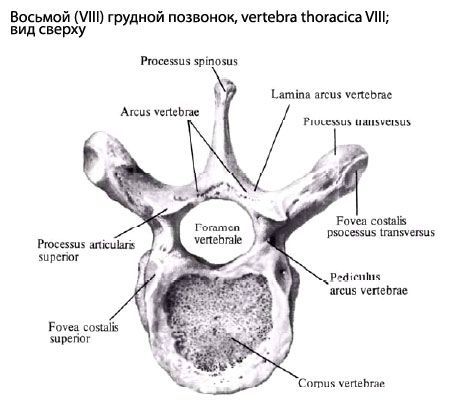Vertebra
Last reviewed: 19.11.2021

All iLive content is medically reviewed or fact checked to ensure as much factual accuracy as possible.
We have strict sourcing guidelines and only link to reputable media sites, academic research institutions and, whenever possible, medically peer reviewed studies. Note that the numbers in parentheses ([1], [2], etc.) are clickable links to these studies.
If you feel that any of our content is inaccurate, out-of-date, or otherwise questionable, please select it and press Ctrl + Enter.
Regardless of belonging to any particular department of the spinal column, all the vertebrae have a general plan of the structure.
Vertebra has a body and an arc. The vertebral body (corpus vertebrae) faces anteriorly and serves as its supporting part. The arc of the vertebra (areus vertebrae) connects from behind with the vertebral body with the legs of the vertebrae (pedunculi areus vertebrae). Between the body and the arch there is a vertebral foramen (foramen vertebrale). The aggregate of all the holes forms the vertebral canal (canalis vertebralis), in which the spinal cord is located.
On the back surface of the vertebral body are nutrient holes through which the blood vessels (arteries and veins) and the nerve pass. From the arch of the vertebrae the processes, to which the fasciae and muscles attach, depart. Back, along the median plane, the unpaired spinous process departs (processus spinosus), to the right and to the left of the arc - the transverse processes (processus transversus). Up and down from the arch of the vertebra are the paired upper and lower articular processes (processus articulates superiores et inferiores). The bases of the articular processes limit the upper and lower vertebral notches (incisurae vertebrales superiores et inferiores). When connecting adjacent vertebrae with each other, the upper and lower notches form the right and left intervertebral foramen. Through these openings pass blood vessels and spinal nerves. At the same time, vertebrae belonging to different parts of the spinal column have their own structural features.

What do need to examine?
How to examine?

